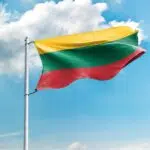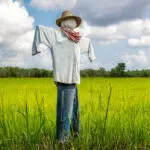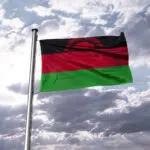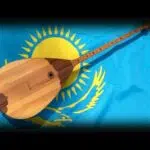We are celebrating Kupala Night on July 6. It is a very old day celebrated in Slavic culture. The celebration of the day began in the 12 century. Its history is rooted in pagan traditions. The day was Christianized in many parts of the world, but still, the tradition remains largely pagan and hasn’t changed much over the centuries. The day is also known by the name “Ivan Kupala.” Kupala Night is considered a pagan fertility rite day where young couples participate in several rituals related to the day. Western Slavic countries also observe this day as St. John’s Day, the feast day for John the Baptist.
History of Kupala Night
Joy, magic, water, summer, and herbs; do you know what the connection is between these seemingly unrelated words? They are all associated with the deity called Kupalo. Kupalo was the holy offspring of fire and night. His father, Simargl, is the god of fire. His mother is Kupalnitsa, the goddess of the night. Kupalo and Kostroma are siblings, and together, they represent fertility. Kupala Night is the celebration of mid-summer. It is celebrated on the summer solstice –– June 24 –– in most places around the world. But they follow the Julian calendar in Russia, so the day is celebrated on July 6 or 7 every year.
Christians widely consider John the Baptist as the forerunner of Jesus. The Church started using the day as Ivan Kupala Day in the fourth century. But the actual pagan version of Kupala Night predates this time. John the Baptist is considered to be born six months before Jesus. Hence, his birthday is considered six months before Christmas day. By aligning the day of John the Baptist with that of Kupala Day, it became easier for the church to spread its ideas and beliefs to the pagan community as well.
This is a pagan fertility rite day, celebrating the shortest night of the year. Most rituals are associated with love or finding a lover. Some rituals are aimed at couples to prove their love. An example would be a couple jumping across a bonfire together to prove their love and loyalty to each other. Slavic people believe this is the only night when ferns bloom. Maidens with garlands in their hair enter the forest in search of the fern flowers, and boys will follow them. Fern flowers are believed to provide good luck. Some other traditions include swimming, collecting herbs, and floating wreaths made from flowers.
Kupala Night timeline
The start of ritualistic and then religious behaviors in humans.
John the Baptist, the forerunner of Jesus Christ, is born.
The Council of Agde includes the feast of John the Baptist in its list of festivals.
Greek missionaries from Byzantium introduce Christianity to Russia.
Kupala Night FAQs
Why is it called Ivan Kupala?
Ivan Kupala is the name coined by the church in the fourth century. The church Christianized the Slavic festival by connecting it to the birthday of John the Baptist.
What religion were the Slavs?
The Slavic people were polytheistic and worshiped many deities representing nature and its forces.
What is Kupala the goddess of?
Kupala is the female personification of the Slavic deity of mid-summer, happiness, peace, magic, water, and herbs — Kupalo. He is the child of fire and night.
Kupala Night Activities
Jump above bonfire
Jumping over a bonfire is a very old ritual. Jump over the fire with your better half as per the Kupala night traditions. Make sure to do this in a safe atmosphere.
Weave wreaths
Weaving flower wreaths is an important activity on Kupala Night. Make sure you get the best-smelling flowers available in your area to make wreaths.
Search for herbs
Do you have a forest nearby? Search the forest and collect the natural herbs available there. Make sure you do this safely, as even a small forest can be full of dangers.
5 Amazing Pagan Facts That You Should Know
Not an organized religion
Paganism is not an organized religion, it was a term used by Christians to refer to non-Christian people who believed in multiple gods.
Ban on Olympics
Emperor Theodosius I, of Rome, banned pagan festivals, ending the ancient Olympic tradition.
Pagans in the U.S.
According to the Pew Forum, there are over a million pagans in the U.S.
Christianity and Pagan festivals
Easter and Christmas were originally pagan festivals Christianized in the early days of Christianity.
Ferns don’t bloom
Ferns are angiosperms and do not bear flowers or fruits, so the ritual of searching for fern blooms on Kupala night was never going to be successful.
Why We Love Kupala Night
We love cultural diversity
We love to celebrate every culture and belief. Kupala Night is a cultural day with a very old history and interesting traditions behind it. It helps us understand and appreciate history.
Takes us closer to nature
Kupala Night activities are conducted in open areas, lakes, rivers, and forests. It celebrates natural elements like fire, water, and plant life. The whole night takes us closer to nature and we love that.
Creates new relationships
Kupala Night is the festival of love. It has rituals that can help you find new relationships and we love it when people connect.
Kupala Night dates
| Year | Date | Day |
|---|---|---|
| 2025 | July 6 | Sunday |
| 2026 | July 6 | Monday |
| 2027 | July 6 | Tuesday |
| 2028 | July 6 | Thursday |
| 2029 | July 6 | Friday |





















